Menu
In the US, they rave about ‘New England in the fall’ but I reckon ‘old’ England in autumn is pretty hard to beat. Leaves changing colour and starting to drop, along with crisp or misty mornings, is one of those heralds of cooler weather and bring moments of delight to what can sometimes be a dull season.
With the dry summer we had this year, many deciduous leaves were starting to fall already, so I was beginning to wonder if we’d have any decent autumn colours at all. But the warm September and then the sudden drop to colder temperatures has kept those leaves hanging on and looking fabulous! (If you want to learn more about the science of why leaves change colour, this lovely article from Kew Gardens is an interesting read).
To celebrate those great colours of autumn, here are our thoughts on leaves, what to do with them and what to plant to get spectacular colours in your own garden.
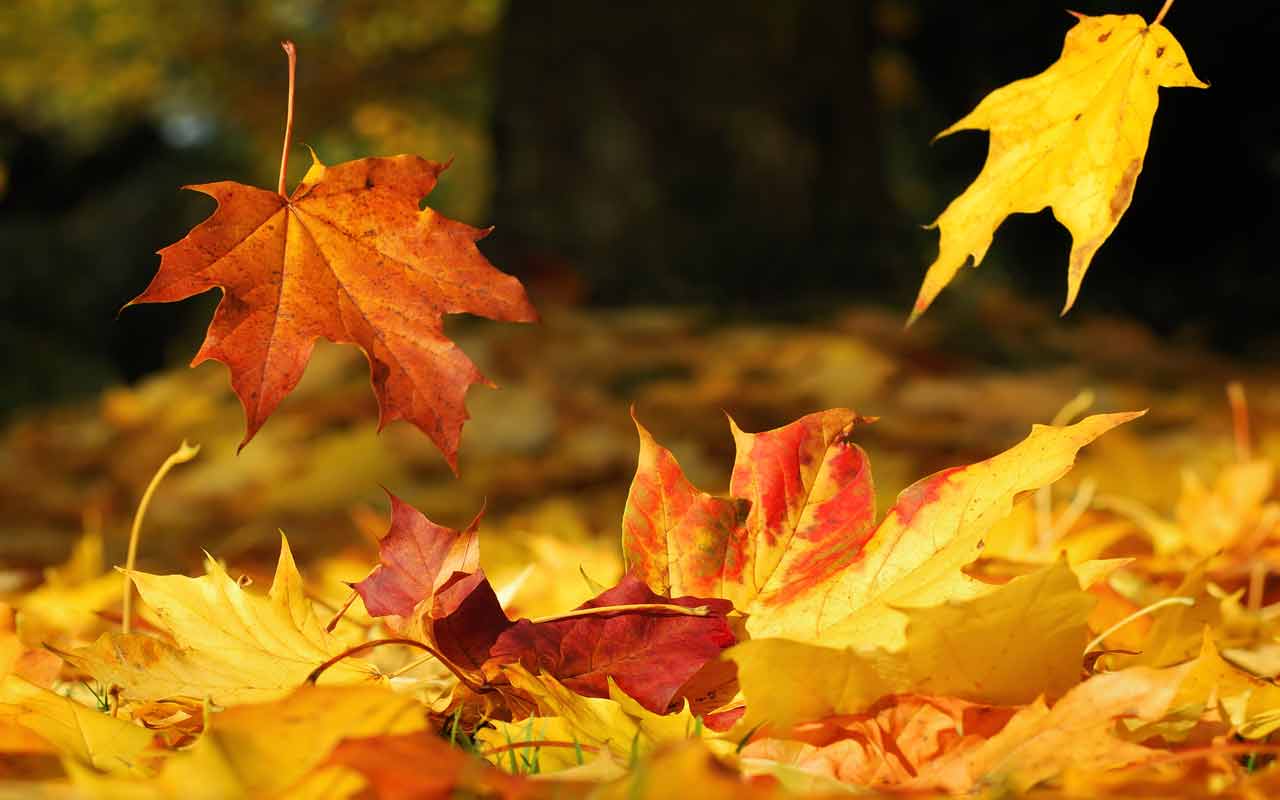
Leaves generate energy for plants by turning sunlight, carbon dioxide and water into ‘food’ in a process called photosynthesis. As the weather cools, the bond between the leaf and the plant weakens and deciduous trees will lose their leaves, not a problem because the tree needs less energy in the winter. Losing leaves also helps preserve moisture in the tree (less surface area to evaporate from) and allows the wind to blow more easily through the branches, meaning the tree is at less risk in storms.
(We love this article from Forestry Scotland about the purpose and colours of leaves).
In the natural world, fallen leaves decompose and become the fuel for next years plants. It is one of those ways that nature has learnt to recycle nutrients. We can replicate this process in our own gardens by making our own leaf mould, which can be a brilliant mulch and help to add organic ‘bulk’ to poorer soils. Here’s how:
Gather up the fallen leaves from your garden. A good way to do that is to run over them with your lawn mower, which usefully serves to chop them up at the same time! (If you have roses, don’t collect any leaves that have black spot as you risk carrying over the disease to next year).
You then need to store the leaves while they decompose. If you are going to make your own leaf mould regularly and you have the space, you might want to spend time constructing a ‘bin’ like the one shown in this Gardeners’ World article and video.
If you don’t have the space or are just trying this for the first time, bin bags will do perfectly well. Make a few holes in the bag for drainage and ventilation (or the leaves will just go sludgy and mouldy) then fill the bag with chopped leaves. If the leaves are really dry, sprinkle half a watering can over them and then tie it closed. Put the bag in an out of the way spot (no special conditions required) and come back to it next spring. If the leaves haven’t quite reached the crumbly consistency you require yet, just leave them for a further few months.
If you are feeling creative, there are lots of things you could make with fallen leaves. Autumn leaf wreathes, a colour spectrum of leaves or even leaf printing (messy but fun!). We love this gallery of leaf craft ideas from Country Living for some artistic inspiration.
We are lucky that in our climate, many plants have leaves (or stems) that will change colour over different seasons. If you’re a particular fan of autumn colour, the ‘holy grail’ is surely a selection of colours from reddish-purples through to amber-golds to provide that kaleidoscope effect. Here is our pick of some of the top performers:
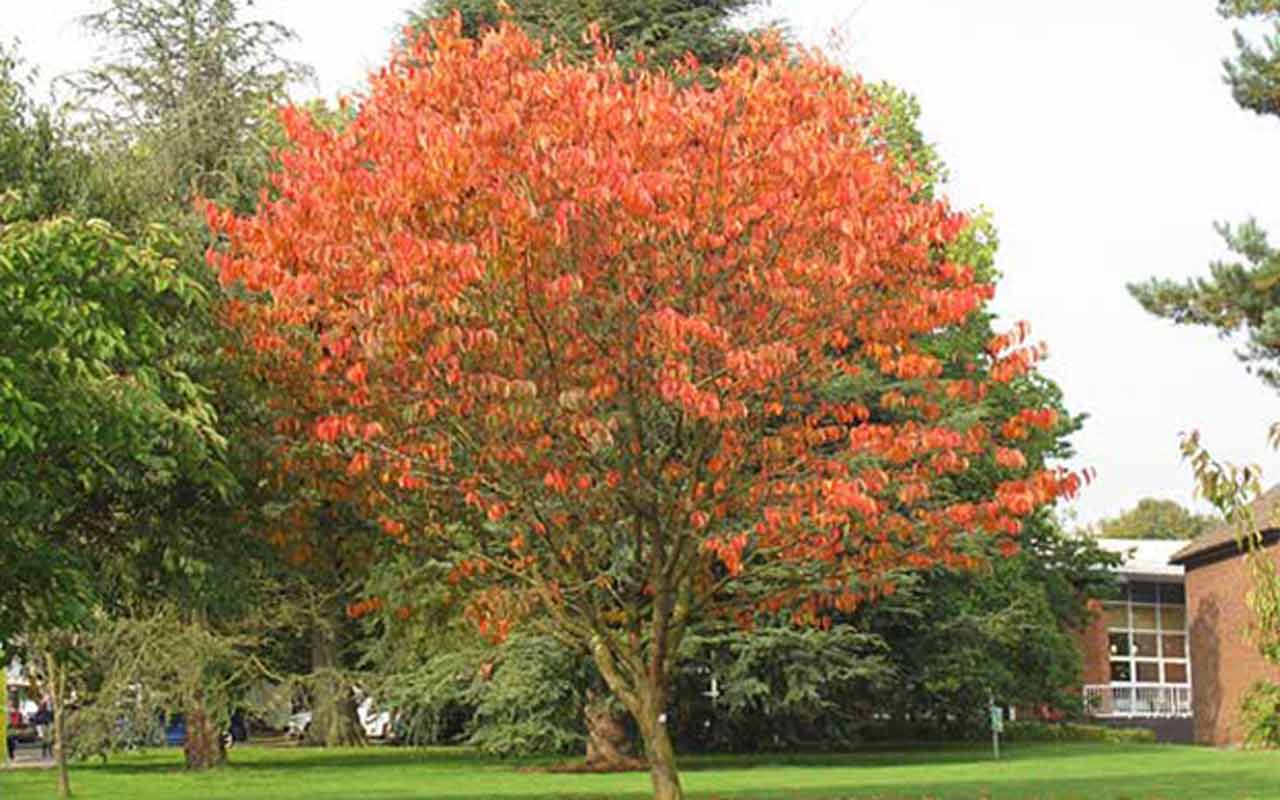
Masses of pretty pink blossom in the spring followed by fiery orange-red leaves in the autumn (an ornamental cherry so the fruits are not edible). Many varieties of flowering cherry have great autumn colour (and blossom) too.
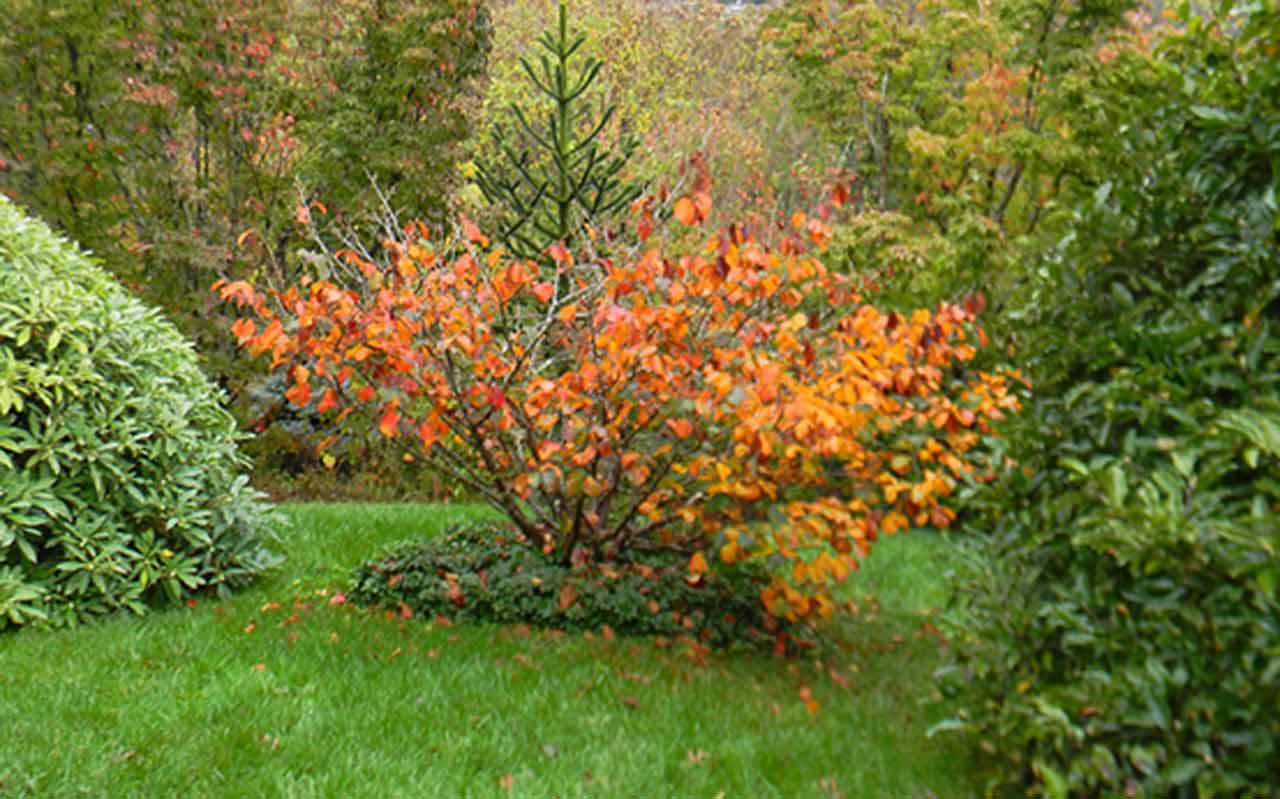
Many varieties of witch hazel have stunning autumn colours; this Hamamelis ×intermedia 'Arnold Promise' is a good example. In addition, witch hazel also flower in late winter or early spring, producing spidery yellow, orange or red flowers on bare branches. They provide colour and often great scent when little else in the garden is doing its thing.
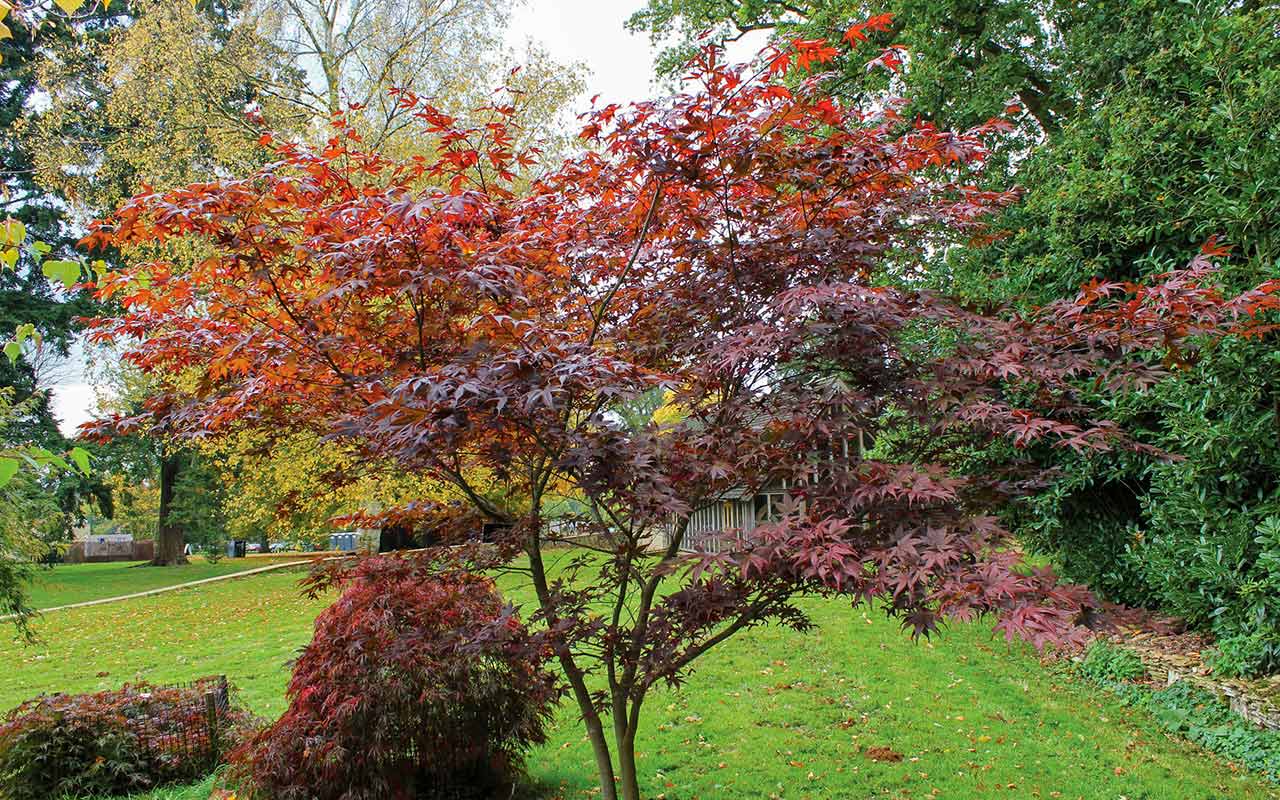
One of the trees most associated with autumn colours are the Acer family. Depending on the variety, their leaves can be anything from purple (atropurpureum varieties) to almost lime green in summer, changing to golds or deep reds in autumn. They have a beautiful leaf shape, too. This one is an Acer palmatum Nuresagi

Amelanchiers are a bit of an all-rounder. With varieties suitable for smaller gardens or pots, lovely blossom and a good shape, they are a popular choice with our garden designers. This Amelanchier canadensis, or Snowy Mespilus, turns a golden toffee colour in the autumn.
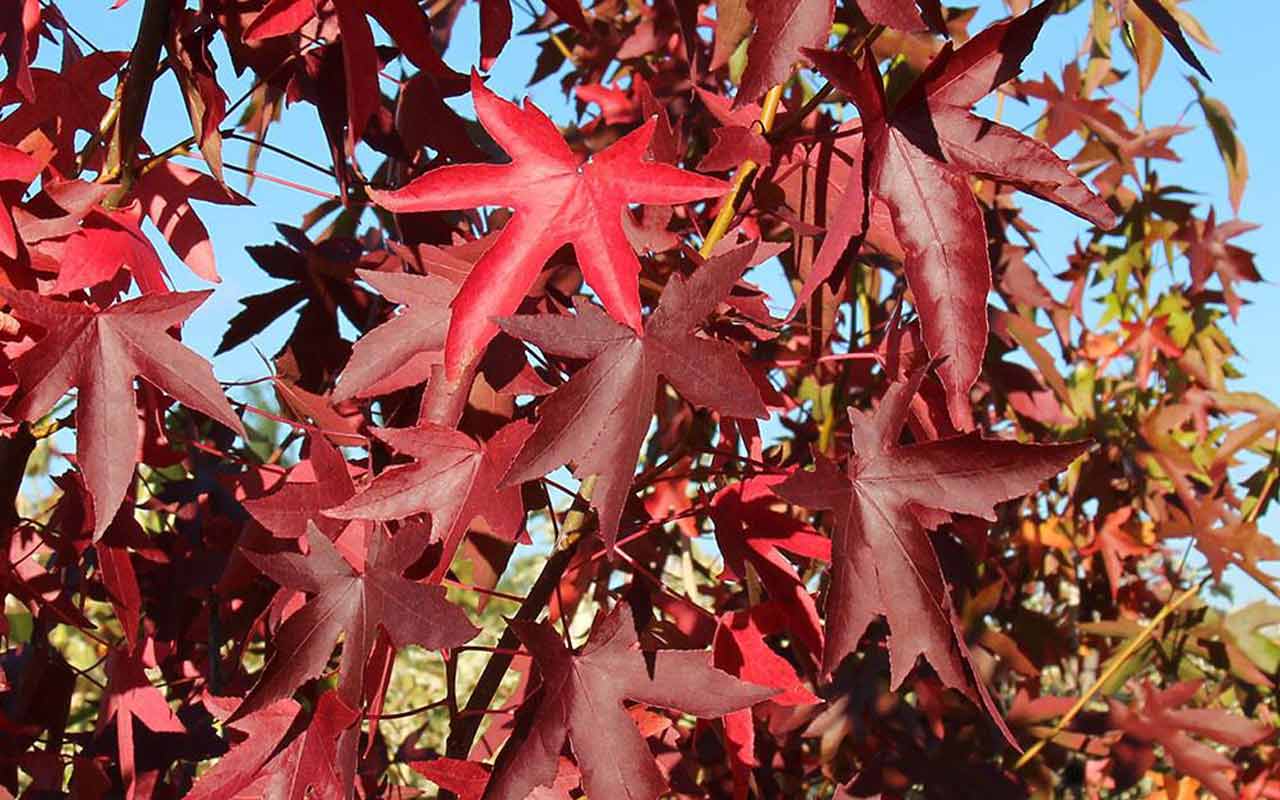
All Liquidambar varieties have maple-like leaves which turn super colours in autumn, colours which are often fairly long-lasting. This Liquidambar styraciflua 'Worplesdon' also has a lovely textured trunk and pretty flowers in spring.
Further reading this autumn:
How to plant a tree or shrub
Choosing the right tree for your garden
Winter garden maintenance jobs
Jobs to do in your garden in October
Jobs to do in your garden in November
Jobs to do in your garden in December
What to plant in October
What to plant in November
What to plant in December
Hambrooks garden design, landscaping & garden maintenance throughout Hampshire for over 50 years.

